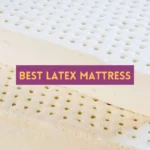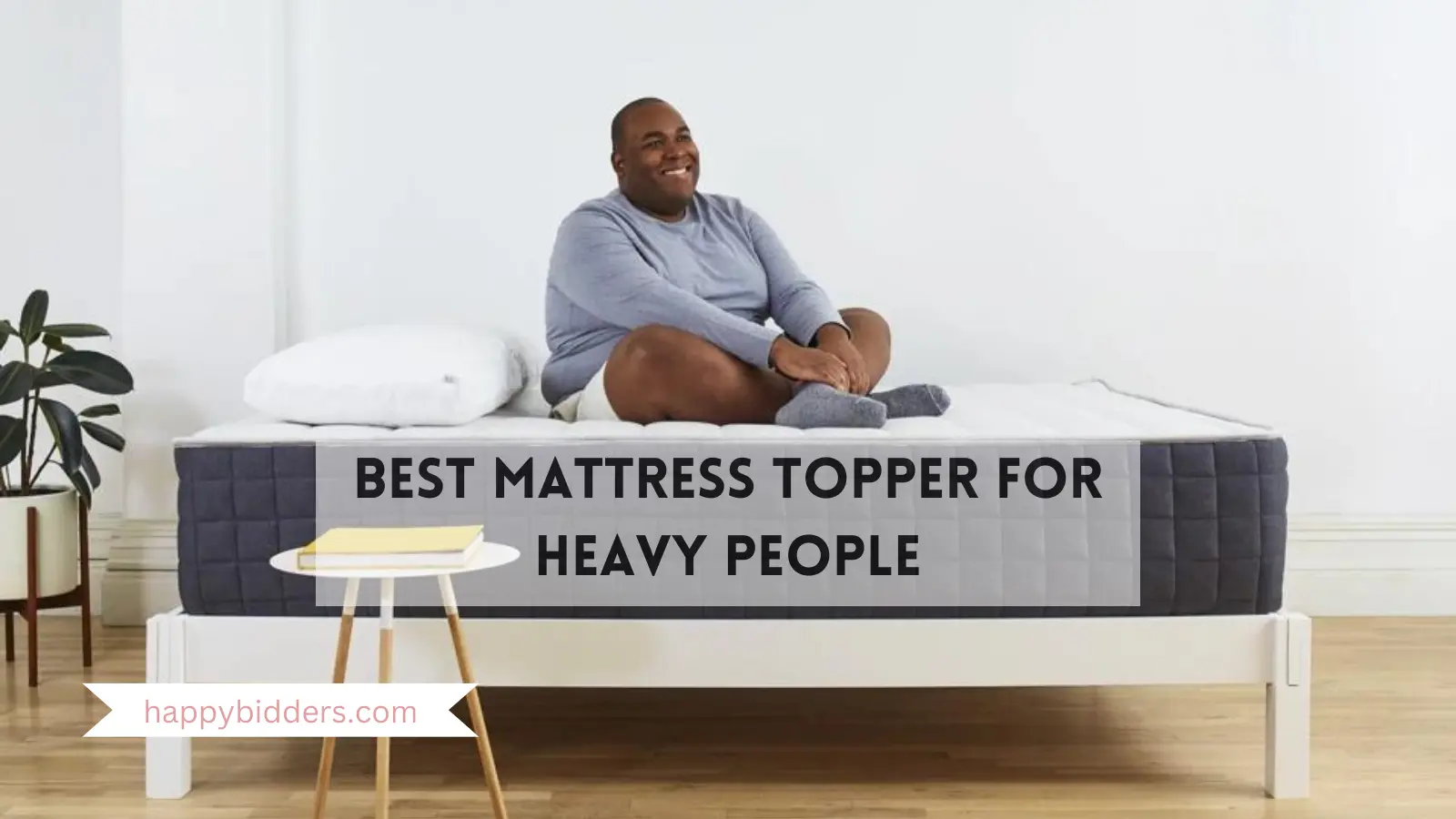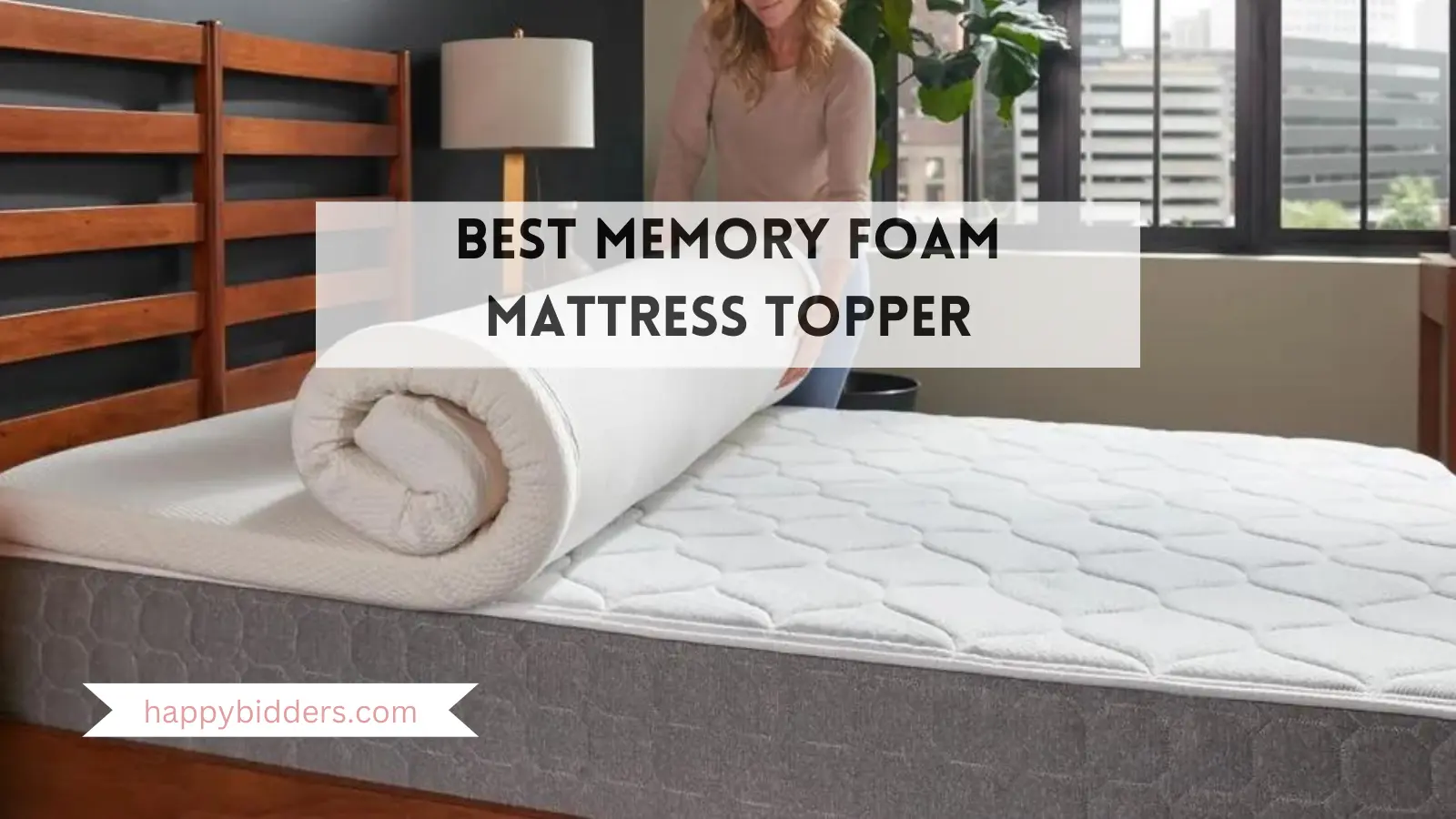As we age, our bodies change and require added cushioning and support. Most mattresses provide adequate comfort when new, but a bed purchased 10 years ago can contribute to aches and pains for seniors. This is why picking a durable, high-quality mattress is important.
Like most adults, seniors need 7 to 9 hours of sleep each night. However, they are less likely to get the recommended amount of sleep, as nearly 50% of seniors experience insomnia. Lack of sleep can lead to issues including memory loss, irritability, and depression. Insomnia can also exacerbate chronic pain and arthritis symptoms.
The right mattress helps create a comfortable sleeping environment and encourages sleeping through the night. Conforming materials like memory foam and latex relieve pressure points, including the hips and shoulders. Breathable materials regulate temperature and prevent overheating, which is ideal for seniors who are sensitive to fluctuating temperatures. For those who share a bed, motion isolation and lack of noise prevent sleep disturbances throughout the night. Simply put, a high-quality mattress is an investment in better sleep.
We’ll cover our top picks for the best rated mattresses for seniors, as well as what to look for when shopping for a new mattress. We’ll also include helpful tips for better sleep, and a few sleep accessories to consider in order to customize your bed.
What Type of Mattress Is Best for Seniors?
Insomnia is one of the most common sleep disorders among seniors, affecting nearly 50% of the population. The difficulty that seniors experience falling asleep or staying asleep can be due to mental or physical reasons. For some seniors, the anxiety of growing older can be enough to keep them up at night. For others, chronic pain, inflammation, and other medical conditions may prevent restful sleep. Senior citizens are also prone to restless leg syndrome, breathing disorders like sleep apnea and issues with thermoregulation. These unique issues mean seniors get less deep sleep each night.
Investing in a high-quality mattress that is supportive and comfortable can help seniors get the sleep that they need. The best type of mattress for seniors will relieve aches and pains associated with arthritis and inflammation. Conforming materials like memory foam and latex contour to the shape of the body to cushion pressure points and help align the spine. This can relieve back and joint pain. Additionally, a mattress with edge support will make it easier for seniors to get in and out of bed. A mattress that stays temperature neutral and prevents overheating provides comfort for seniors who cannot regulate their body temperature well, or who are prone to sleeping hot.
There are several types of mattresses available, each of which has specific pros and cons for seniors. These are outlined in the following table.
Memory foam is known for its responsive properties. The foam closely conforms to the shape of your body for pressure point relief and full-body support. A memory foam mattress has thick comfort layers of memory foam with a polyfoam support base. There are several types of memory foam, including traditional viscoelastic foam, open cell memory foam, and gel-infused memory foam. While traditional memory foam tends to retain heat, open cell and gel-infused foams regulate temperature better.
Average Price:
The price of a memory foam mattress will depend on the density and type of foam used. On average, memory foam mattresses cost between $500 and $1,000, though luxury models can cost up to $4,000.
Pros for Seniors:
- Memory foam closely conforms to the shape of your body, alleviating pressure points and keeping the spine aligned. This helps relieve seniors’ aches and pains.
- Memory foam eliminates motion transfer by isolating and absorbing movements. This prevents sleep disturbances for seniors.
- Memory foam is silent when bearing weight.
Cons for Seniors:
- Memory foam mattresses tend to lack edge support, which may make it harder for seniors to get in and out of bed.
- Soft memory foam causes the feeling of sinking into the mattress, which may make it difficult for seniors to change positions or move around on the bed as needed.
- Memory foam tends to retain heat, which is not ideal for seniors who struggle with temperature regulation or sleeping hot.
A latex mattress can be made with natural or synthetic latex. Natural latex is made with sap harvested from rubber trees, which is then formed and baked using the Dunlop or Talalay method. Dunlop latex tends to have a heavier base and is ideal for support layers, while Talalay latex is lightweight with a springy feel. Synthetic latex imitates the feel of natural latex, but is made with petroleum. Latex mattresses offer contouring support with more resilience than memory foam.
Average Price:
Latex mattresses can be expensive, especially if they are made entirely with natural latex. A natural latex mattress will cost between $1,500 and $2,000 or more, while a synthetic latex mattress will cost closer to $1,000.
Pros for Seniors:
- Latex gently contours to the shape of the body, relieving pressure points and keeping the spine aligned. This helps seniors who have joint or back pain.
- Latex is more breathable than memory foam, resulting in better temperature regulation for seniors.
- Latex is resilient and has a little bounce to it, which will help seniors change positions and get in and out of bed.
Cons for Seniors:
- Latex mattresses are heavy and difficult to move, especially for seniors. This is important to consider if the mattress is delivered in a box and needs to be set up.
- There is a potential for motion transfer, so seniors who share the bed may feel their partner move or shift positions throughout the night.
An innerspring mattress is constructed with a steel coil support base and comfort layers of foam or fiber. This traditional mattress style is easily recognizable. There are various sizes and types of innerspring coils. The type of coils used determines how responsive and supportive the mattress is.
Average Price:
Innerspring mattresses are widely available and tend to be the most affordable mattress option. On average, these mattresses range in price from $500 to $1,000.
Pros for Seniors:
- Innerspring mattresses typically have a reinforced perimeter, which increases the edge support of the mattress and makes it easier for seniors to get in and out of the bed.
- Innerspring coils add airflow throughout the mattress for better temperature regulation and a cooler night’s sleep for seniors.
- Durable, responsive coils offer support for proper spinal alignment.
Cons for Seniors:
- Innerspring mattresses are not as conforming as memory foam or latex, so they offer less pressure point relief for seniors.
- Coils tend to transfer motion and noise across the bed, so seniors who share the bed with a partner may experience more sleep disturbances throughout the night.
- Innerspring mattresses may sag and provide uneven support over time.
A hybrid mattresses is constructed with elements of an innerspring mattress and a foam or latex mattress. The support core is typically made with pocket coils, which minimize motion transfer and are more responsive. Hybrid mattresses often have a second innerspring layer of microcoils. These mattresses have thick comfort layers of memory foam or latex, with a polyfoam transition layer on top of the coils. The multiple layers provide the benefits of the other mattress types, while minimizing some of the drawbacks.
Average Price:
Hybrid mattresses can be expensive, due to the thick comfort layers and complex coil construction. On average, a hybrid mattress will cost between $1,500 and $2,000, with luxury models costing upwards of $4,000.
Pros for Seniors:
- Hybrid mattresses have conforming comfort layers that provide pressure point relief and back support for seniors.
- The innerspring coils of a hybrid mattress improve air circulation throughout for better temperature regulation.
- Hybrid mattresses tend to have better edge support, as the coil base usually has a reinforced perimeter. This makes it easier for seniors to get in and out of bed, and increases the sleepable surface area of the mattress.
Cons for Seniors:
- Hybrid mattresses are typically heavy and hard to move. Seniors may struggle to move, set up, or adjust the mattress as needed, especially if it is delivered in a box.
- Hybrid mattresses can be expensive, which is not ideal for seniors shopping on a budget.
Important Factors to Consider When Buying a Mattress
For seniors, buying a new mattress can be a tough choice. Seniors have unique needs, but there is not a one-size-fits-all approach to mattress shopping. There are many factors to consider, and the aging process is different for everyone. The following factors should be considered when shopping for a mattress, though some will be more important than others, depending on personal preferences and needs.
For senior citizens with chronic pain, inflammation, and arthritis, conforming comfort layers provide pressure point relief and reduce aches and pains. For those who are sensitive to fluctuations in temperature, or who have difficulty regulating their own body temperature, a mattress with temperature neutrality provides comfort. Seniors who share the bed with a partner will also want to consider motion isolation, noise, and edge support.
- Support: Support is one of the most important elements of a mattress. This determines how well the mattress keeps the spine aligned. The mattress should be flat and even, without any sagging or deep indentations. For seniors with back pain or arthritis, a supportive mattress can relieve aches and pains.
- Contouring: How closely the mattress conforms to the shape of your body will determine how well it cushions pressure points and keeps the spine aligned. Memory foam and latex tend to conform closely, while innerspring mattresses have thinner comfort layers that do not provide the same amount of contouring.
- Firmness: Whether you need a soft or firm mattress will depend on several factors, including your body weight and sleeping preference. Firmness is a subjective measure of how soft and comfortable the mattress feels. Most mattresses fall in the middle of the firmness scale at medium firm, though there are plush soft and firm mattresses available. People who sleep on their side or weigh less tend to prefer soft mattresses, as they cushion the shoulders and hips. Medium-firm mattresses are best for average-weight people who sleep on their back or side. Firm mattresses are preferable for heavy sleepers or people who sleep on their stomachs.
- Motion Isolation: For seniors, sleep disturbances can occur when they share the bed and their partner changes positions or gets in and out of bed. Motion isolation in a mattress prevents those movements from transferring across the bed. Memory foam is especially good at isolating and absorbing movement, while innerspring mattresses are more likely to transfer movement.
- Temperature Regulation: Seniors may experience issues with temperature regulation, and some may have a tendency to sleep hot. Breathable materials like wool and cotton wick away heat and moisture. Hybrid and innerspring mattresses have added airflow due to the coil support layers. Traditional memory foam mattresses, on the other hand, tend to retain heat.
- Edge Support: Without edge support, the perimeter of the bed is prone to sinking or sagging. A reinforced perimeter prevents this and makes it easier for seniors to get in and out of bed. It also makes the bed supportive from edge to edge, which benefits those who share the bed or are prone to sleeping on the edge of the mattress.
- Noise: A mattress that makes noise when bearing weight will cause sleep disturbances. Innerspring mattresses are most likely to make noise when you get in and out of bed or change positions throughout the night. Foam mattresses, on the other hand, are typically silent.
- Price: Seniors may have a set budget in mind, so the price will be an important consideration. A new mattress is an investment, and a high-quality mattress will improve sleep quality. Cheap mattresses may be tempting in terms of affordability, but they are less likely to provide the support, comfort, and durability that seniors need.
Sleep Help and Tips for Seniors
For senior citizens, quality sleep improves overall health and well-being. Sleep gives the body a chance to recover each night, and is crucial for cognitive function. Seniors face several obstacles when it comes to getting the right amount of sleep each night, including arthritis pain, medical conditions, and changes in their natural sleep cycles. In addition to investing in a high-quality mattress, the following tips can help seniors get better sleep each night.
- Maintain a consistent bedtime routine: Winding down around the same time each night, and waking up at the same time each morning, will encourage your body to develop a natural sleep/wake cycle. Calming activities in the evening will signal that it is time to start preparing for sleep. Relax with a warm bath, pleasant reading, or meditation so that you don’t feel stressed at the end of the day. Electronics should also be avoided an hour or two before bedtime, as the blue light emitted from them can disrupt melatonin production. This can make it harder to fall asleep.
- Exercise regularly: Staying active throughout the day can help you sleep better each night. Scheduling a time each day for exercise can help make it a consistent habit. Be sure to exercise in the morning or early afternoon, as exercising too close to bedtime can make it difficult to fall asleep. Low-impact exercises like water aerobics, walking, and yoga are ideal for seniors. Regular exercise can help with pain management and also improve the quality of sleep that seniors get. People who exercise regularly tend to fall asleep faster and stay asleep longer.
- Create a bedroom environment conducive to sleep: Creating a comfortable bedroom environment will help you look forward to falling asleep. The bedroom should be dark, quiet, and cool. The ideal room temperature for quality sleep is between 65 and 70 degrees Fahrenheit. Blackout curtains keep light out of the room, which can help seniors sleep in later. Soft bedding that is lightweight and breathable should help keep seniors comfortable. Most importantly, a supportive and comfortable mattress will help you sleep through the night.
Best Mattress for Seniors 2023
We chose from hundreds of products to select the best mattresses for seniors. Following an overview of our process for choosing these mattresses, you’ll find a list of our top picks and a brief description of each model.
How We Chose
To select our top mattress picks, we drew from a wide range of criteria that reflect the most important sleep concerns for seniors – namely adequate support, pain and pressure relief, ease of movement, and temperature control.
Durability is one of our chief concerns. The average mattress performs for six to eight years before a replacement is required, but some models will wear out more quickly than others and develop impressions along the surface that compromise your comfort and support. The most durable mattresses are built with comfort layers that resist wear and tear and support cores that offer decent overall stability, ensuring years of use.
Support and pressure relief are also important. A supportive mattress will improve your spinal alignment to reduce pressure in sensitive areas without sinking too much or feeling too stiff. Support is particularly important for seniors who weigh more than 230 pounds because they are more likely to sink into their mattress. Added pressure along the spine is common for seniors – and the wrong mattress can exacerbate this issue. The best mattresses for pressure relief conform to the body without sinking or hugging too closely, allowing for even weight distribution and less discomfort in pressure-sensitive areas.
Temperature control is another important concern. The best mattresses for cooling are constructed with breathable components that regulate the surface temperature, wick moisture away from your body and circulate air throughout the interior. Senior couples who frequently get up during the night can also benefit from a mattress that excels at motion isolation.
Some mattresses tend to sink when you move across the surface, which can be particularly uncomfortable for those with chronic pain or mobility issues. These seniors often benefit from a supportive, responsive mattress that sinks to a minimal extent and keeps them on an even plane. Seniors who struggle to get in and out of bed due to mobility restrictions or other issues should also consider a mattress with strong edge support. These mattresses provide push-back to keep you upright, rather than buckling and sagging.
Lastly, we looked at buying factors like price. A new mattress can cost anywhere from a couple of hundred dollars to a few thousand. Ultimately, the value of a mattress comes down to its durability and performance, and how these factors measure up to the sticker price. We also considered aspects of customer service that are particularly appealing to seniors, such as in-home delivery and old mattress removal options or lengthy sleep trials with easy returns.
Sleep Accessories for Seniors
In order to get quality sleep each night, a supportive and comfortable mattress is probably the most important purchase you can make. In addition to a high-quality mattress, the following accessories can further customize your sleep environment and improve your sleep health.
Pillows
Pillows are an easy way to adjust your head and neck position or customize support for the rest of your body. Pillows support the head and neck and take pressure off of the shoulders. They are made with a variety of materials, including down, down alternatives, memory foam, and polyester. What type of pillow you decide on will depend on your personal preferences, sleeping position, and weight. Side sleepers tend to need a higher loft pillow to prop their head up and keep their neck and spine aligned. People who sleep on their back or stomach typically need a lower loft pillow.
Body pillows are ideal for seniors who experience back or joint pain. These pillows are larger and longer than standard pillows and can be used to prop up your legs or arms or provide additional support for your back. They can also be used to relieve pressure points, cushion knees and elbows, and alleviate aches and pains.
Mattress Toppers
For seniors who want to change the overall feel of their current mattress, a mattress topper is worth considering. This accessory is a thick comfort layer that sits on top of your existing mattress and is usually made of latex, memory foam, down, or wool. Toppers can be used to change the firmness of your current mattress. Materials like latex and memory foam offer contouring support and pressure point relief. Mattress toppers can also improve the temperature regulation, motion isolation, and overall feel of your mattress.
Mattress toppers tend to be more affordable than mattresses. While this is one way to upgrade your bed without buying an all-new mattress, it is important to note that a mattress topper will not fix a broken or sagging mattress.
Adjustable Beds
Adjustable beds allow you to elevate your head or feet for a customizable sleeping position. For seniors, elevating the head can help with breathing issues by opening the airway. This reduces snoring and helps those who suffer from sleep apnea. Elevating the feet reduces pressure on the spine and leg swelling. Customizing the position of the bed can reduce minor aches and pains for seniors and improve their circulation. For seniors who share a bed, an adjustable bed with split sides allows each person to customize their side of the bed. Some adjustable beds have unique features, including under-bed lighting, massage settings, and zero-gravity positions.
When purchasing an adjustable bed, be sure to check the compatibility of your mattress. Latex and memory foam mattresses typically work best with adjustable beds, since they are flexible enough to change positions without compromising comfort and support. Hybrid mattresses may work with an adjustable bed, but it depends on the coil construction used.







